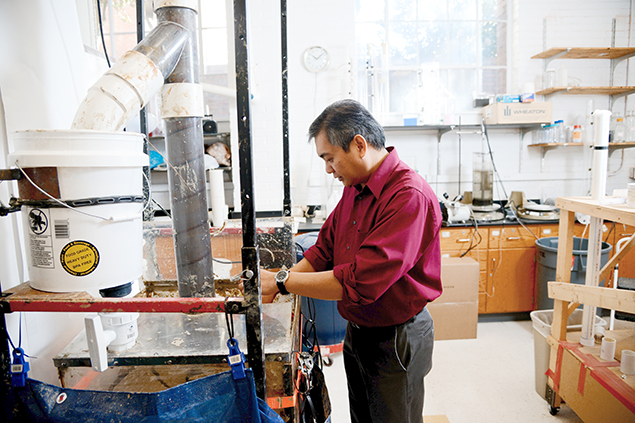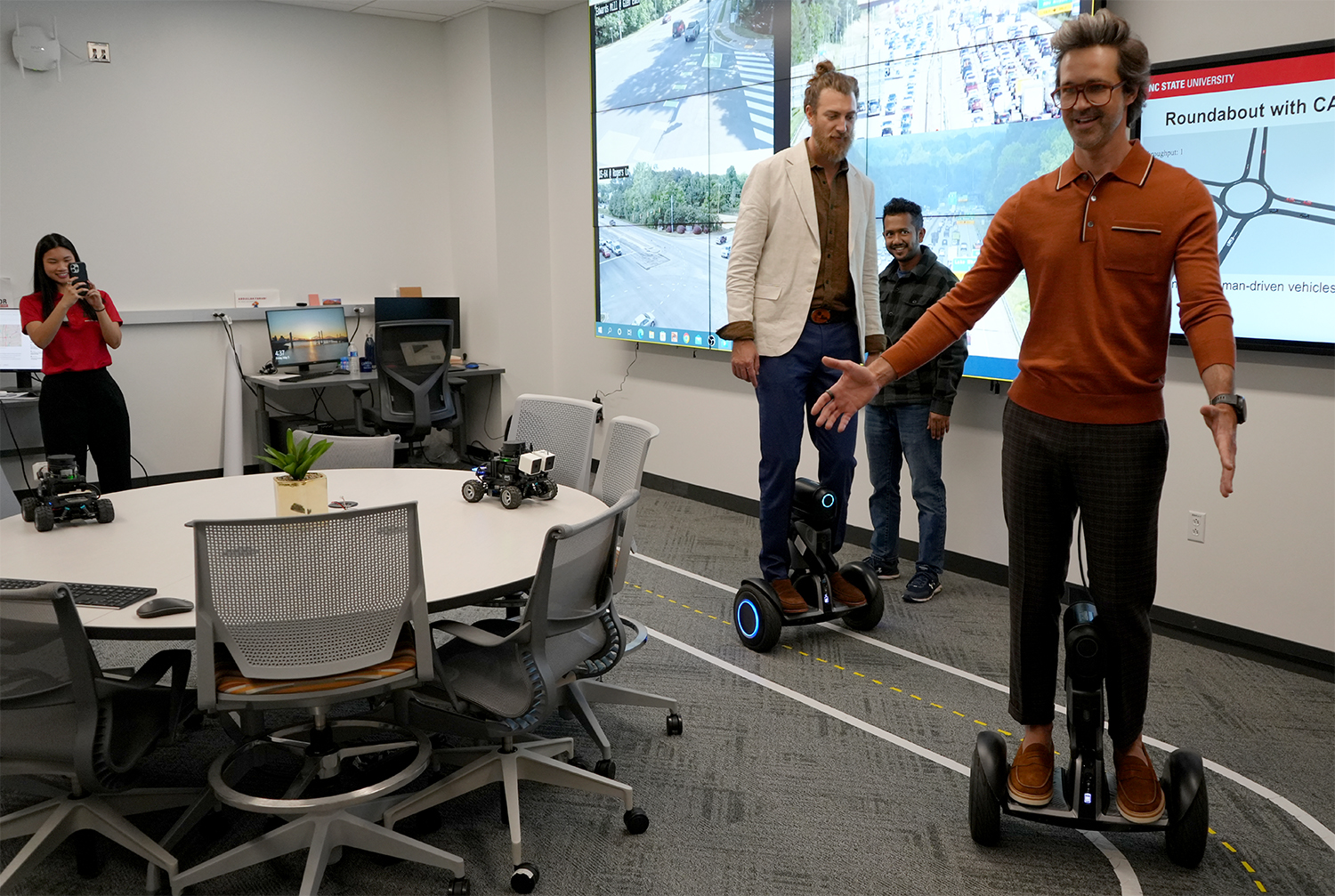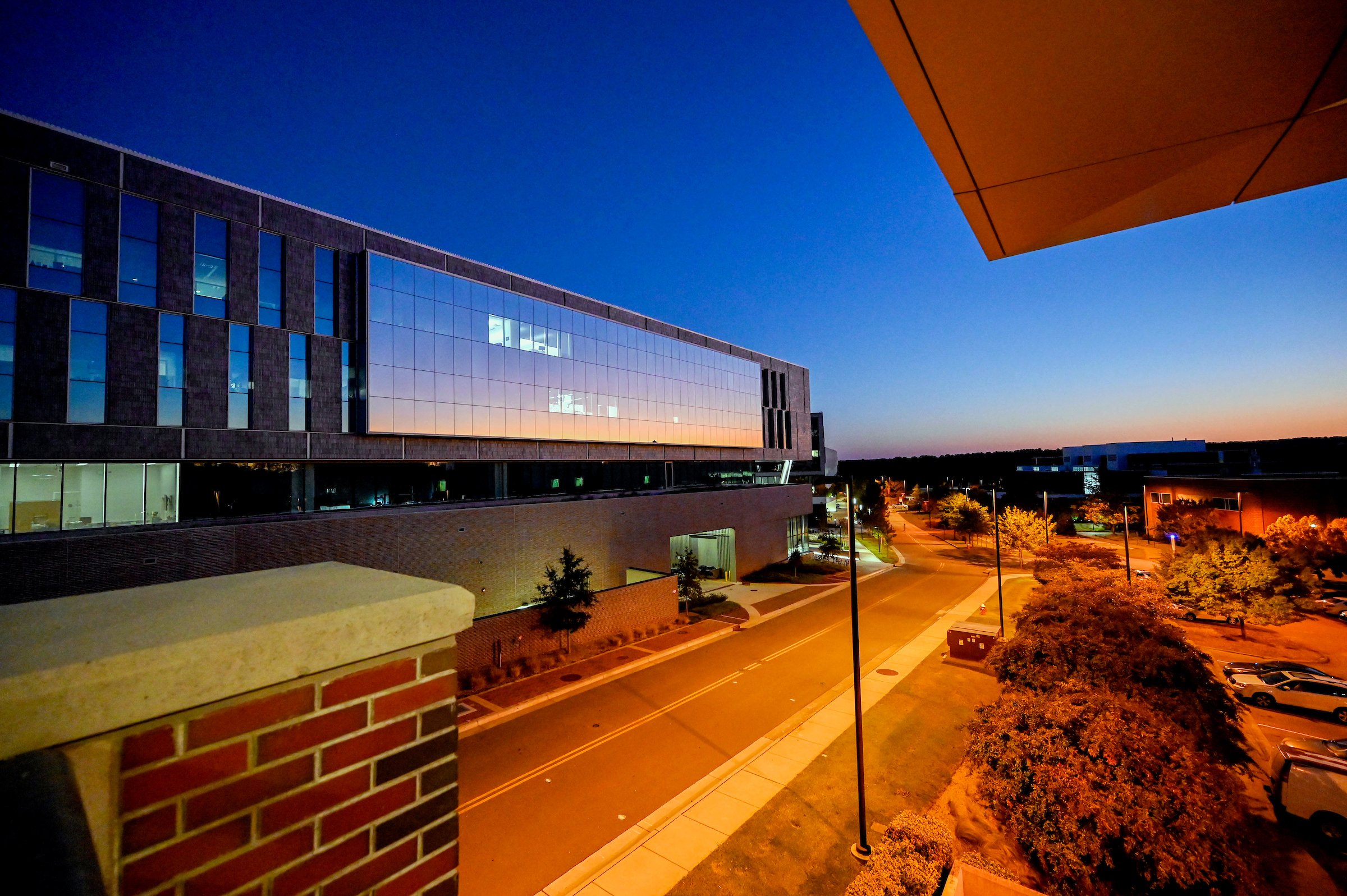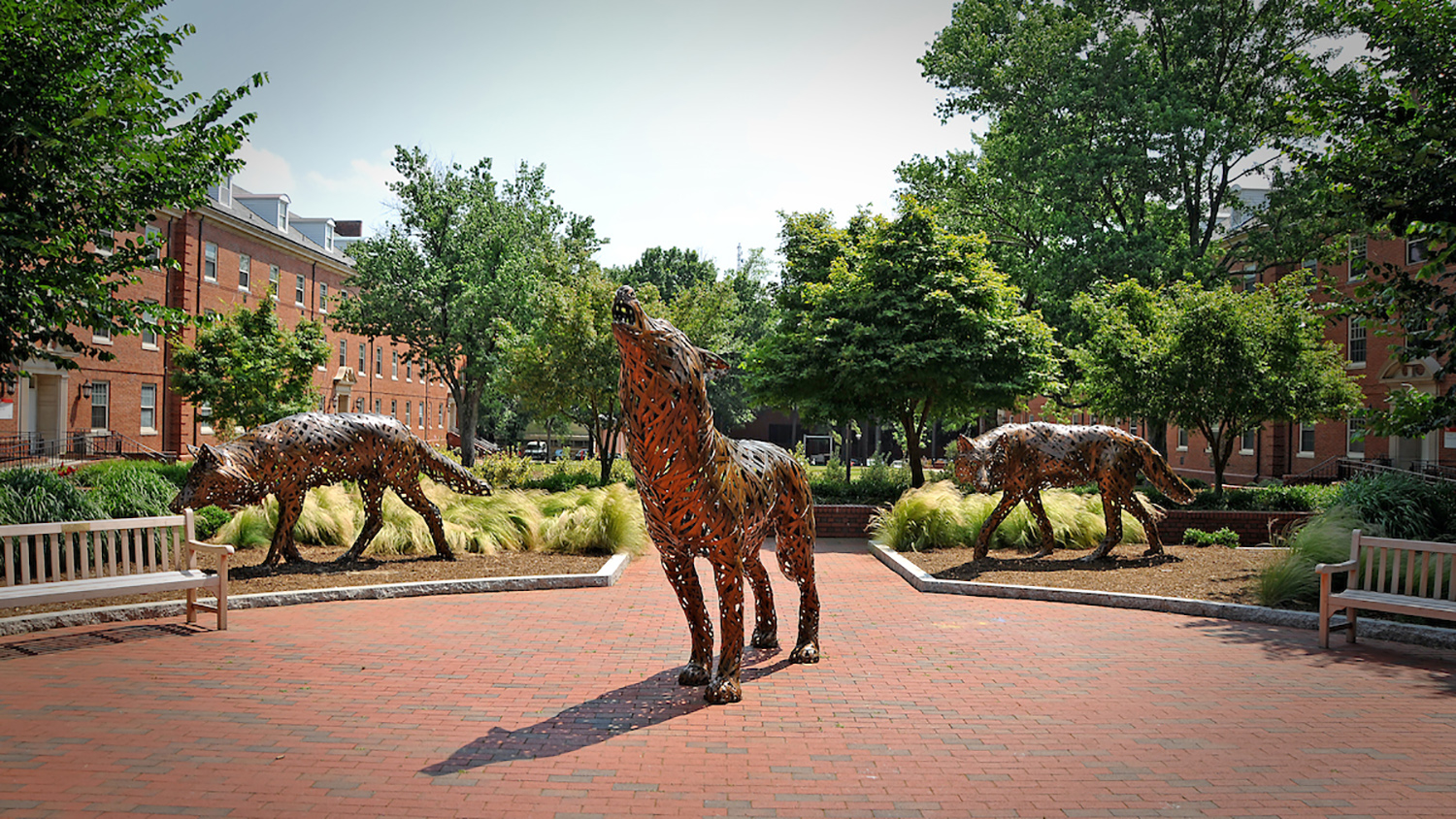A Significant Step

 Faculty members and students in the Edward P. Fitts Department of Industrial and Systems Engineering (ISE) are bringing innovations that save money, time and lives to fields that range from manufacturing to healthcare.
Faculty members and students in the Edward P. Fitts Department of Industrial and Systems Engineering (ISE) are bringing innovations that save money, time and lives to fields that range from manufacturing to healthcare.
Their counterparts in the Department of Civil, Construction, and Environmental Engineering (CCEE) are improving roads and buildings and ensuring our air and water are cleaner than ever before.
Both are doing this vital work in buildings that are more than 50 years old.
ISE and CCEE are located in Daniels and Mann halls, respectively, along Stinson Drive on the university’s North Campus. Mann Hall was built in 1964, and Daniels Hall in 1926.
Nearby, the Department of Nuclear Engineering — home of the first nuclear research reactor designed, built and operated by an academic institution anywhere in the world — is still using the same facility built to house that reactor. Burlington Labs opened in 1950.
In the last decade, the College has grown in national rankings and enrollment. Research expenditures have increased, and the College has been able to attract faculty members who are leaders in their fields.
Much of that growth has been predicated on the College’s move to NC State’s Centennial Campus, which puts university faculty members and students together with top businesses and government agencies and has been recognized nationally as a model of what the 21st-century research campus should look like.
 Yet, only six of the College’s nine academic departments have made the move.
Yet, only six of the College’s nine academic departments have made the move.
“We still have one third of our College that does not benefit from having state-of-the-art infrastructure to do world-class research,” said Dr. Louis Martin-Vega, dean of the College. “We have great people in the departments that haven’t gone over to Centennial, but we don’t have the infrastructure that they need to have.”
The College is planning a new Engineering Oval building* that would house ISE and CCEE and some of the College administration now located on North Campus. A statewide bond package that will go before North Carolina voters on March 15 includes $75 million that would help make the building a reality.
No one is standing still
Engineering Building I opened on Centennial Campus in 2004 and was followed by Engineering Building II in 2005 and Engineering Building III in 2010.
And that’s only part of the College’s footprint on Centennial. Centers and labs associated with the College occupy parts of several other buildings.
State bond funds built Engineering Buildings I through III. Plans have been in place to build a fourth and fifth building but were sidetracked by the 2008 recession.
Meanwhile, colleges of engineering across the country are making significant investments, realizing the kind of impact that engineering education has on a state’s workforce and economy.
Texas A&M University plans to double its student enrollment and faculty size by 2025 and is building a new 600,000-square-foot engineering building. Purdue University will hire more than 100 new engineering faculty members in the next three to four years.
Engineering Oval will be a big step toward making the College’s move to Centennial a reality. But it won’t be the only step.
“The vision that we have and the goals of our College are highly dependent upon completing our move to Centennial Campus, and this is a very significant step toward that,” Martin-Vega said. “It will not take us all the way, but it will take us very close.”
Engineering Oval plans call for a 227,000-square-foot building. The College has 450,000 square feet of current classroom, laboratory and administrative space still to relocate to Centennial.
The Department of Nuclear Engineering will remain on North Campus and will be part of a fifth engineering building, along with the rest of the College administration.
Moving the entire College to Centennial is essential in order to keep NC State Engineering in position to compete with peer institutions for the best students and faculty members.
First though, the College must complete Engineering Oval. And that will require passage of the Connect NC bond.
Making a connection
Two-thirds of the $2 billion Connect NC bond package would go to higher education in North Carolina, including capital improvements to the North Carolina Community College System and the 16-campus University of North Carolina System. Along with Engineering Oval, the bond package includes $85 million for a new Plant Sciences Research Complex that would be part of NC State’s College of Agriculture and Life Sciences.
While passage of the bonds would be a big step toward making Engineering Oval a reality, it would not be the only step. The university has committed funding, and the College will raise $60 million in private donations to help fund construction. Commitments of a little more than $20 million have been made, and the NC State Engineering Foundation will be working hard after the bond vote to secure more.
Private money for campus facilities is a fairly new phenomenon for NC State, but is standard procedure for most universities around the country, Martin-Vega said.
It will take significant investment from alumni and friends of the College, said Brian Campbell, assistant dean for development and college relations and executive director of the Foundation.
“In terms of the history and the trajectory of the College, this is one of those watershed moments,” Campbell said. “Once the entire College moves to Centennial, then we will be able to reach our full potential. We need help from the alumni in a way that we’ve never needed help from them before.”
*[Editor’s Note: The Engineering Building Oval (EB Oval) was renamed Fitts-Woolard Hall on April 20, 2018, at the groundbreaking ceremony.]
Return to contents or download the Spring/Summer 2016 NC State Engineering magazine (PDF, 3MB).
- Categories:


